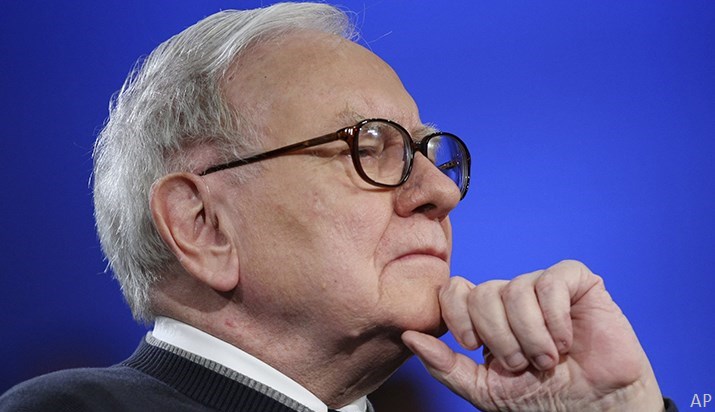![]()
The coronavirus pandemic pushed the world deeper into the digital domain, sparking a rush for digital devices both for work and entertainment, and as a result, demand for semiconductor chips has skyrocketed. Chipmakers have struggled to keep up with the demand. An acute shortage of semiconductors has rattled the automotive industry, forcing some automakers to shut plants and cut production.
Despite the widespread disruption caused by COVID-19 pandemic, the PHLX Semiconductor Index (SOX) has had a strong run over the past year. The index has clocked an incredible 155% gains, as of Feb 26, from its February 2020 lows. The index’s performance handily outstripped the 71% gains for the S&P 500 and 90% rise in the NASDAQ for the same period.
The outlook for the semiconductor industry remains bright. Data from research firm IDC show the global semiconductor revenue grew to US$442 billion in 2020, up 5.4% compared with a year earlier. IDC forecasts the market to reach US$476 billion in 2021, an increase of 7.7% year-over-year. Long-term investors may want to keep a close eye on the following stocks:
| Taiwan Semiconductor Manufacturing Co Ltd ADR | |
| Ticker | TSM |
| Current yield: | 1.38% |
| Forward P/E: | 32.47 |
| Price | US$126 |
| Fair value: | US$136 |
| Value | Fairly valued |
| Moat | Wide |
| Moat Trend | Stable |
| Star rating | *** |
| Data as of Feb 26, 2021 | |
The world’s largest contract chipmaker, Taiwan Semiconductor held over 50% market share in 2019 per Gartner. The chip foundry, known for scale and high-quality technology, counts Apple and Nvidia among its impressive customer base.
TSM generates solid operating margins in the highly competitive foundry business. Moreover, the shift to the fabless business model -- in which a company designs microchips but contracts out production -- has created tailwinds for the chipmaker. “The firm has long benefited from U.S. and increasingly Asian semiconductor firms transitioning from integrated device manufacturers to fabless designer,” says a Morningstar equity report.
Morningstar equity analyst Phelix Lee identifies two long-term growth factors for TSMC. First, the ongoing consolidation of semiconductor firms is predicted to create demand for integrated systems made with the most advanced nodes. Second, organic growth of artificial intelligence, Internet of Things (IoT) and high-performance computing (HPC) applications may last for decades. “AI and HPC play a central role in quickly processing human and machine inputs to solve complex problems like autonomous driving and language processing,” says Lee, who recently raised the stock’s fair value to US$136 per ADR.
| Intel Corp | ||
| Ticker | INTC | |
| Current yield: | 2.30% | |
| Forward P/E: | 12.64 | |
| Price | US$60 | |
| Fair value: | US$65 | |
| Value | Fairly valued | |
| Moat | Wide | |
| Moat Trend | Negative | |
| Star rating | *** | |
| Data as of Feb 26, 2021 | ||
Semiconductor giant, Intel designs and manufactures microprocessors for the global personal computer and data centre markets. While the server processor business has benefited from the shift to the cloud, Intel has also been expanding exposure to new opportunities such as the IoT, memory, artificial intelligence, and automotive.
Intel bulked up its offerings in the automotive industry through its US$15.3 billion purchase of Mobileye in 2017. The acquisition jump-started Intel’s “prospects in advanced driver assistance systems and autonomous driving,” says a Morningstar equity report, noting that “Mobileye is a high-growth business that already has considerable design wins across major automakers.”
The report identifies automotive as one of the firm’s key growth drivers. While automotive and other subsegments remain a small portion of its current total revenue, their contribution could grow meaningfully. “Beyond 2024, automotive will be a key driver of revenue growth,” says Morningstar sector strategist Abhinav Davuluri, who pegs the stock’s fair value at US$65. “Mobileye’s incumbency in countless advanced driver assistance systems programs and robust pipeline of design wins, coupled with Intel’s technological and financial resources give us confidence Intel will be a formidable player in the race to self-driving cars.”
| NVIDIA Corp | ||
| Ticker | NVDA | |
| Current yield: | .12% | |
| Forward P/E: | 47.17 | |
| Price | US$532.30 | |
| Fair value: | US$400 | |
| Value | 33% premium | |
| Moat | Narrow | |
| Moat Trend | Positive | |
| Star rating | ** | |
| Data as of Feb 26, 2021 | ||
Chip titan Nvidia (NVDA) makes semiconductors used in high-end PCs for gaming, data centres, and automotive infotainment systems. In recent years, the firm has increased its focus on artificial intelligence and autonomous driving and has experienced success in these markets where it boasts a first-mover advantage.
“In automotive, most of Nvidia’s current sales are infotainment-related,” says a Morningstar equity report, forecasting that “Nvidia will capture a healthy portion of the self-driving opportunity, culminating in a 24% CAGR in automotive revenue through fiscal 2026, following a soft fiscal 2021 due to COVID-19.”
The chipmaker’s Drive PX platform, a deep learning tool for self-driving, is being used in R&D at more than 370 partners. “Should the firm’s autonomous platform win the lion’s share of self-driving business, Nvidia would strengthen its moat via superior intangible assets and switching costs,” argues Davuluri, who recently raised the stock’s fair value from US$340 to US$400. He forecast revenue to grown at 15% annually through fiscal 2026 “as the firm continues to diversify its revenue sources to areas of strong potential.”
Passionate about Investing in New Ideas?
Explore the latest Global Thematic Fund Landscape report here






















